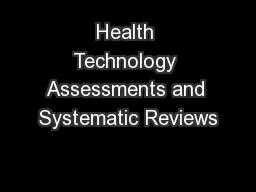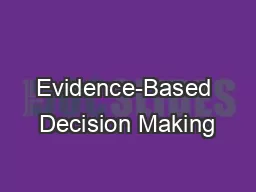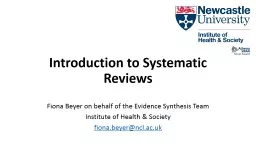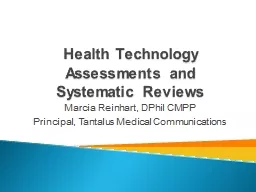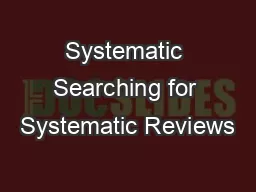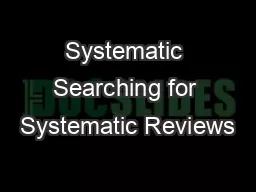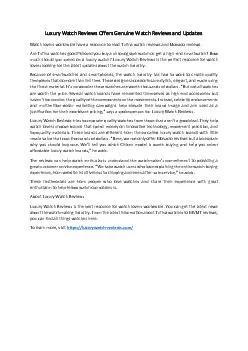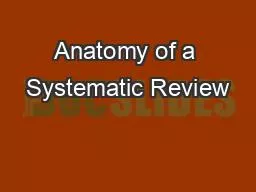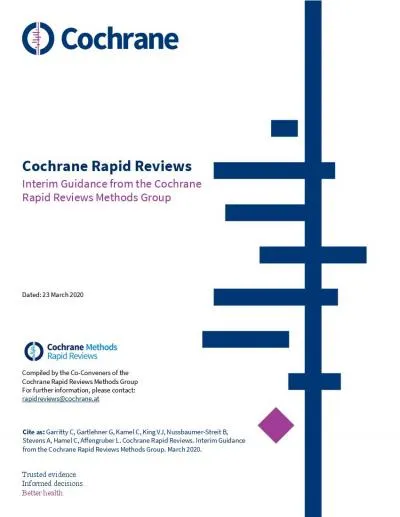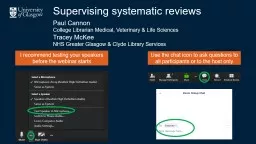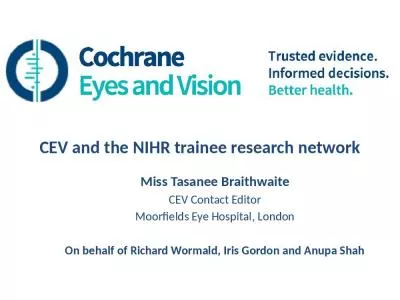PPT-Health Technology Assessments and Systematic Reviews
Author : myesha-ticknor | Published Date : 2018-12-06
Marcia Reinhart DPhil CMPP Principal Tantalus Medical Communications Many definitions H ealth T echnology A ssessments Technology assessment in health care is
Presentation Embed Code
Download Presentation
Download Presentation The PPT/PDF document "Health Technology Assessments and System..." is the property of its rightful owner. Permission is granted to download and print the materials on this website for personal, non-commercial use only, and to display it on your personal computer provided you do not modify the materials and that you retain all copyright notices contained in the materials. By downloading content from our website, you accept the terms of this agreement.
Health Technology Assessments and Systematic Reviews: Transcript
Download Rules Of Document
"Health Technology Assessments and Systematic Reviews"The content belongs to its owner. You may download and print it for personal use, without modification, and keep all copyright notices. By downloading, you agree to these terms.
Related Documents

